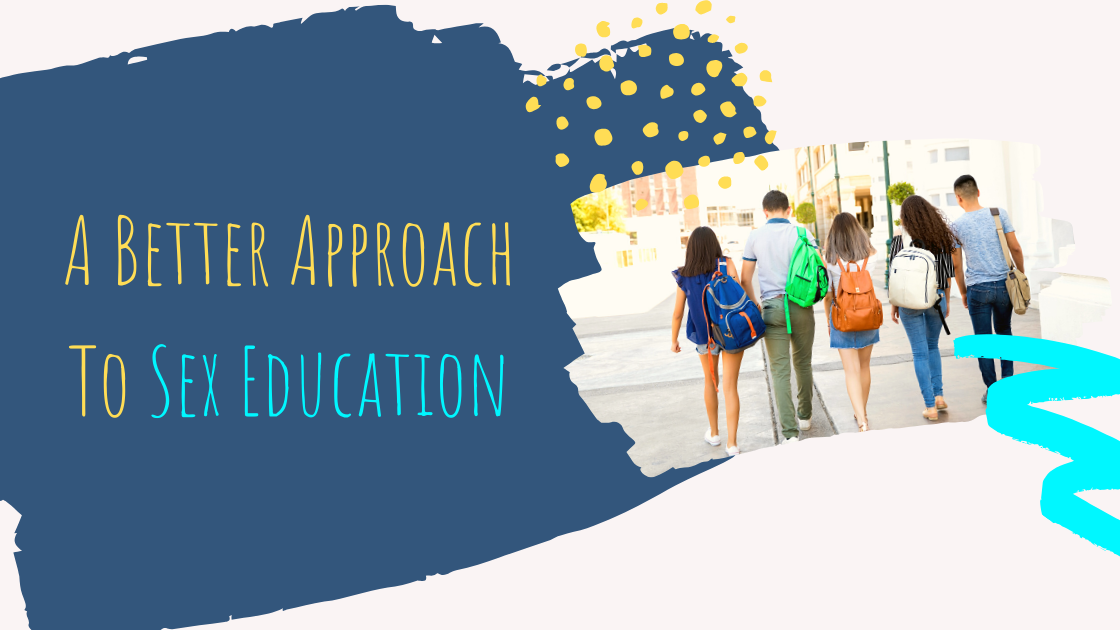13 Apr, 2020

Sex is without a doubt a fundamental aspect of life. It strengthens the bond between partners and has been proven to carry many physical and psychological beneficial properties. On the other hand, sexual activity comes with an array of risks, such as STDs, unintended pregnancies, regrets, feelings of being used and a loss of self-esteem. These negative outcomes may especially impact teenagers. This is why sex education is crucial. When it comes to sex, teens need to be thoroughly informed and equipped in order to be able to make healthy decisions for their lives. But what kind of sex education? As a parent, as a teacher, you have the right to demand the best sex education for your children or for your students.
Today, there are two types of sex education commonly being taught in schools:
- SRA, or “Sexual Risk Avoidance”, such as the Pure Freedom program.
- SRR, or “Sexual Risk Reduction”, also referred to as “Comprehensive Sex Education” (CSE)
Between the two, SRA has consistently proved to be the most effective approach in maximizing teens’ physical and emotional health.
What is Sexual Risk Avoidance Education?
Sexual Risk Avoidance Education’s aim is to help teenagers thrive and stay safe. This means teaching them the skills to avoid the risks related to sex all together instead of simply reducing them through the use of contraception. In that sense, SRA mirrors other public health models such as drug, alcohol, and smoking prevention education. It follows a primary prevention strategy as opposed to a second or tertiary one. In primary prevention public health models, the main focus is to eliminate the risk behavior and the negative outcomes that stem from it. To do so, students are told to stay away from unhealthy substances completely, and not just to use caution. Similarly, SRA recognizes that while contraception can reduce the risk of STDs and unintended pregnancies, it is not always true. Besides, contraception cannot protect against emotional hurts. Therefore, the best way to avoid these risks is to abstain from sex.
However, SRA goes beyond sexual activity as it adopts a holistic sex education approach. While its curriculum includes medical facts about anatomy, contraception and STDs, it also focuses greatly on relationships. Teenagers are given information on subjects such as how to distinguish healthy relationships from toxic ones, consent, and self-image. All materials are age-appropriate and the parents’ participation in their children’s education is highly encouraged. You can find more about the content of the Pure Freedom program right here.
In a nutshell, SRA is based on the following considerations:
- Sex is a wonderful thing but teen sex is a risk behavior that can take a toll on a youth’s physiological, emotional and academic life.
- Teenagers are more than capable to understand those risks and to delay sexual initiation when given the right tools and information.
So what proves that these assertions are accurate and that SRA truly is the best type of sex ed?
Why Sexual Risk Avoidance over Sexual Risk Reduction:
SRA works. Research has systematically shown that it is the best approach when it comes to protecting youth from the negatives consequences of risky sex. A corpus of 25 peer-reviewed studies concluded that teenagers who attended SRA programs instead of SRR programs were:
- Much more likely to delay sexual initiation,
- If sexually active, much more likely to discontinue or decrease their sexual activity,
- No less likely to use a condom if they initiate sex,
- More likely to excel academically,
- Less likely to engage in other risk behaviors.
In comparison, 80% of the teenagers who were only taught Sexual Risk Reduction were found to fare worse or no better, meaning that they were more vulnerable to unplanned pregnancies and STDs due to an earlier sexual initiation.
These numbers do matter, especially when considering that the majority of teenagers aged 13 to 19 are not having sex (71.3% of them). They desperately need accurate information and guidance in order to make the best choices for their future. This is what SRA gives them, empowerment to make the healthiest choices, while SRR normalizes teen sex by claiming that it is healthy.
Where SRR fails:
In reality, teen sex can have detrimental impacts on academic success: “adolescents who become sexually active early in high school are less likely than peers to earn either a high school diploma or attend college.“It can also affect mood, as sex can lead to depression. Moreover, despite the push by SRR programs to use contraceptives such as condoms, adolescents are using them less and less often. As a consequence, the CDC reports that teenagers and young adults aged 15 to 24 “account for half of the 20 million new sexually transmitted infections that occur in the United States each year”. No sex is completely “safe”.
SRR also fails in protecting teenagers from unintended pregnancies, falsely claiming that contraception makes sex “safe”. The truth is that almost 50% of women seeking abortions were on birth control before getting pregnant. Given that not all unintended pregnancies end in abortion, we can safely determine that the number of pregnancies due to failed contraception is even higher. Contraception fails.
Finally, research conducted by the Barna Group in 2015 found that teenagers felt pressured into having sex while participating in SRR. This is a concern they could share with their parents. Unfortunately, they are also far too often encouragedthat they can manage their sex lives on their own, without even needing to talk to their parents in order to get contraception or abortions.
If you feel invested in your child’s sex education or if you are a teacher, you can find more information on our Pure Freedom program website. Feel free to contact us with questions, as well as, request a speaker for your class who will provide a holistic message of healthy relationships.
By Elodie Takamiya
Resources:
https://weascend.org/wp-content/uploads/2017/10/SRA-Works-web.pdf?x74821
https://weascend.org/wp-content/uploads/2017/10/Infographic-TPP-Failure-v2-1-page-printable.pdf
https://nccd.cdc.gov/youthonline/App/Results.aspx?LID=XX
https://www.healthline.com/health-news/why-are-so-many-teens-ditching-condoms
https://www.cdc.gov/std/life-stages-populations/adolescents-youngadults.htm
https://www.myrelationshipcenter.org/resources/teens-say-sex-ed-pressures-them-to-have-sex